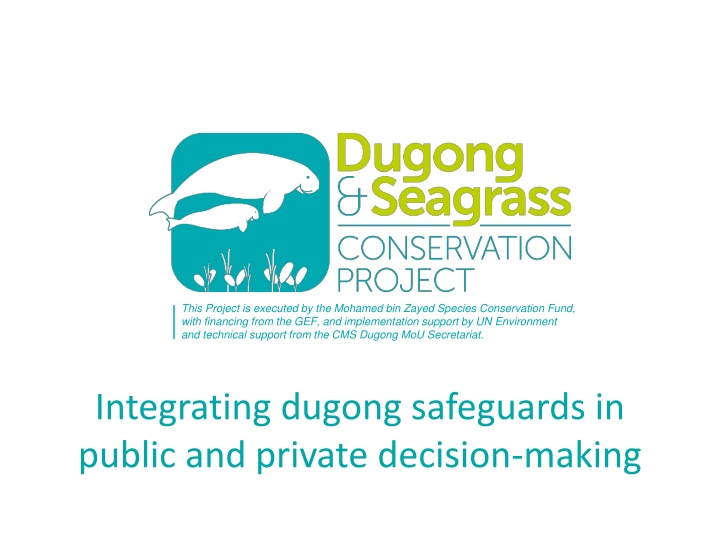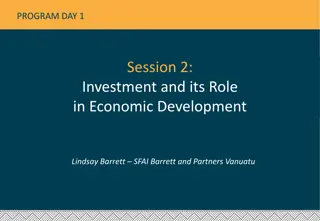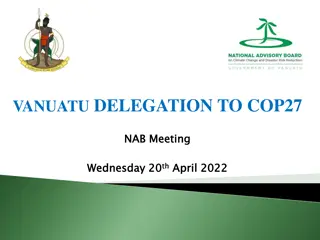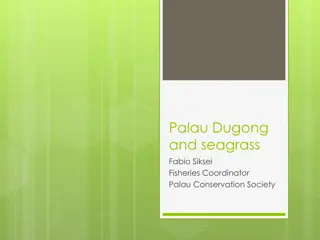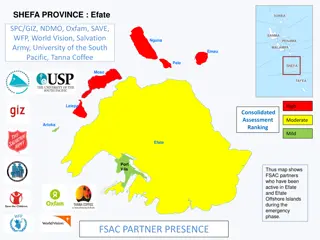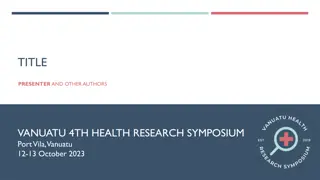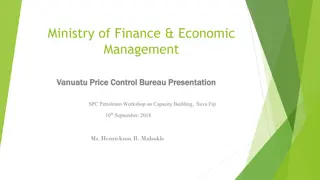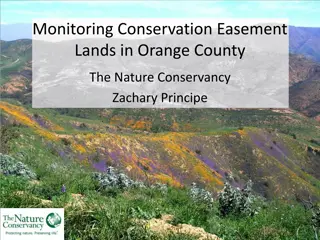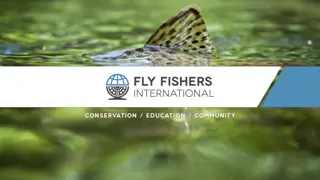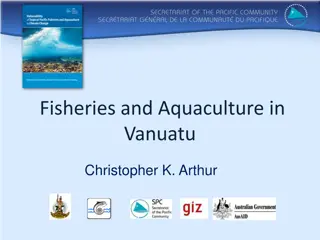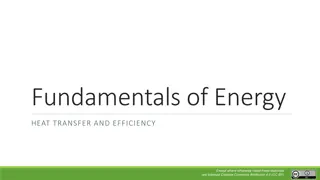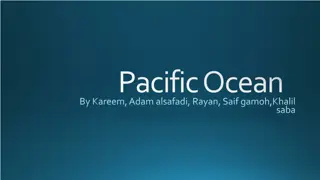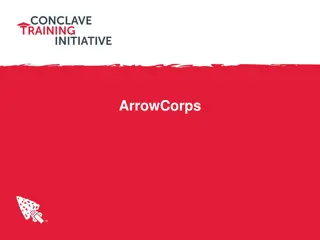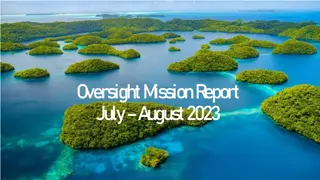Conservation Efforts for Dugongs and Seagrass in Vanuatu
The Mohamed bin Zayed Species Conservation Fund, with support from the GEF and UN Environment, is implementing a project in Vanuatu to address knowledge gaps, raise awareness, and develop a National Plan of Action for the conservation of dugongs and their seagrass habitat. Through identifying and prioritizing hotspots, action plans, and marine spatial planning, efforts are underway to safeguard these vulnerable species and their ecosystem.
Download Presentation

Please find below an Image/Link to download the presentation.
The content on the website is provided AS IS for your information and personal use only. It may not be sold, licensed, or shared on other websites without obtaining consent from the author.If you encounter any issues during the download, it is possible that the publisher has removed the file from their server.
You are allowed to download the files provided on this website for personal or commercial use, subject to the condition that they are used lawfully. All files are the property of their respective owners.
The content on the website is provided AS IS for your information and personal use only. It may not be sold, licensed, or shared on other websites without obtaining consent from the author.
E N D
Presentation Transcript
This Project is executed by the Mohamed bin Zayed Species Conservation Fund, with financing from the GEF, and implementation support by UN Environment and technical support from the CMS Dugong MoU Secretariat. Integrating dugong safeguards in public and private decision-making
Objective of the VU1 project in Vanuatu To fill knowledge gaps about the distribution of dugongs and seagrasses in Vanuatu and the threats they face, to increase awareness about dugongs and seagrass and their conservation and to develop a National Plan of Action for Dugongs and their Seagrass Habitat in Vanuatu
Dugong and seagrass hotspots identified and prioritised Maps were generated from the results of the CMS Dugong questionnaire In-country experts identified the dugong hotspots using the following maps: i. Dugong areas, seagrass areas and dugong sightings ii. Areas where communities reported more than 10 dugongs that overlap with gillnet fishing areas iii. Areas where communities reported 2 to 10 dugongs that overlap with gillnet fishing areas iv. Gillnet fishing density overlapping with dead dugong sightings Twenty Hotspots were identified. These hotspots were then assigned a priority for conservation measures of high, medium or low as a result of the discussion with the local experts about other threats that are likely to be present in that areas, such as development, high population tourism activities and boat traffic. Six were considered of high priority, nine medium priority and five of low priority.
Action Plans regional and National Dugong Action Plan under SPREP marine species programme 2018-2022 VESS team requested to review previous action plan and make recommendations Attended regional Pacific island workshop on dugong and seagrass in Munda, Solomon Islands, Vanuatu data and information integrated in the Dugong Action Plan Recommendations for a Nation Plan of Action for Dugongs and their Seagrass Habitat were drafted. The recommendations were based on the regional SPREP action plan and the global Dugong CMS action plans. They were discussed at a workshop organised by the NFC members, to examine activities, choose which ones were applicable and adapted them for suitability for Vanuatu. The process of developing the National Plan of Action for Dugongs and their Seagrass habitat, will continue this year under CEPF funded dugong project
Other policies and plans The information from the survey were integrated in the National Biodiversity Strategy and Action Plan (NBSAP) 2018-2030 National Environment Policy and Implementation Plan 2016-2030. The project team attended the GEF6 validation workshop for GEF-6 Project Identification Form (PIF) on Expanding Conservation Areas Effectiveness (ECARE) in Vanuatu. Results from the dugong survey are amongst information being used to guide the plan for the GEF6 project. Reach and
Guidelines for interacting with dugongs Relevant and practical for the local situation Diagrams and bullet points are used in the guidelines to make them easy to read and understand. Written in all three official languages of Vanuatu English French and Bislama
Launch of guidelines The launch of the guidelines was attended by government, dive operators and hoteliers
Lessons Learnt Research, data and information is needed to inform policy and support decision making Awareness activities important to raise the profile of dugongs and seagrass meadows and the threats they face with decision makers community level to government Relationships and collaboration are important Some policies take time to develop and for some the up take is fast. are local
Upscale / replication potential Information from SUMA report will be used for zoning of Vanuatu s waters and to identify potential new protected areas and support project proposals Guidelines for dugong interactions are available on VESS website and others can adapt them to their local situation. https://www.vanuatuconservation.org /guidelines-for-interacting-with- dugongs/ Next steps Complete the national plan of action for dugongs and their seagrass habitat. Guidelines for turtle tourism
Next Steps Complete the national plan of action for dugongs and their seagrass habitat project. Guidelines for turtle tourism EDF-11 By-catch project best practice framework for ghost gear and gill net fishing Ocean s 5 project for protected area Aore / Malo a dugong hotspot is the project site. under CEPF
Vanuatu Project Partners The Vanuatu Environmental Science Society The Vanuatu Fisheries Department The Department of Environmental Protection and Conservation Implementing partner Project Partner Project Partner
